Other than climbing on Exit Glacier in Alaska, I have not actually been on a glacier — so when I found out that not only can I access Athabasca Glacier in the Rocky Mountains of Canada and stand on it but also drink the water fresh off of the glacier, I could not resist.
Drinking Incredible Water on Athabasca Glacier
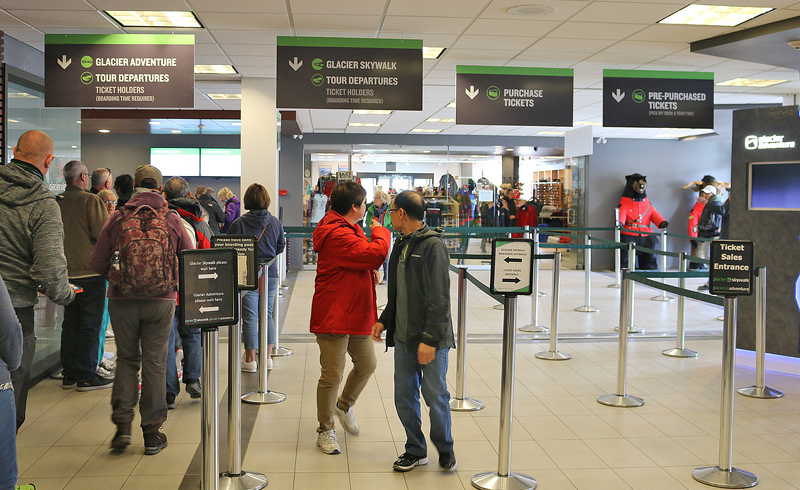
I paid for the tickets in advance to save money. If you pay for the tickets at least 48 hours in advance, you can save ten percent off of the cost of the experience — and you do not have to wait in line at the Columbia Icefield Discovery Centre to purchase tickets.

The special line for pre-purchased tickets was empty; and the Glacier Adventure experience is operated by Brewster Travel Canada.

Once the time for the tour to which I was assigned arrived, I boarded the bus to take passengers to the special vehicles which climb onto the glacier.

The bus was equipped with overhead storage compartments — similar to those aboard an airplane. The monitors aboard the bus were never used.

We were then taken across Icefields Parkway to a depot where we waited on a platform to board one of these all-terrain ice explorers.

These all-terrain ice explorers cost greater than a million dollars each; and their top speed is 18 kilometers per hour.

This Columbia Icefield bumper has apparently seen better days — which is to be expected.

There were plenty of windows and skylights aboard one of these vehicles; so there really was no bad seat in which to sit.

Our driver was originally from Québec and poked fun at her own accent.

The cheetah on the blue paper was for identification purposes so that we knew which bus to board when we were finished on the glacier.

She was also our guide and explained some facts and figures pertaining to both the glacier and the vehicle as we started down the steep descent prior to climbing the glacier.

Other all-terrain ice explorer vehicles ply the makeshift “road” on the glacier itself.

Our final destination is located in the center of the photograph; and the stop sign designated the place where all-terrain ice explorer vehicles must stop if another one was in the process of ascending the steep incline. This procedure is for safety reasons.

The all-terrain ice explorer vehicle stopped to allow the other one to climb up the hill.

It is a slow process. Remember that the top speed of these vehicles is 18 kilometers per hour — as though they were stuck in first gear.

Yellow grading vehicles which are used to maintain the “road” rest on the moraine as the other all-terrain ice explorer vehicle slowly grinds its way up the hill.

At the bottom of the hill, the all-terrain ice explorer vehicles go through a “tire wash” of sorts — comprised of melted glacier water — to keep the tires of the vehicles as clean as possible prior to climbing on the glacier.

Once the all-terrain ice explorer vehicle rests at the designated spot on the glacier, the passengers are given approximately 30 minutes on the ice…

…and are treated to close views of Athabasca Glacier itself.

Although most people wore jackets and heavier clothing, I wore a shirt with short sleeves, as the temperature was just right for me.

Viewing the glacier while on the ice is significantly better than viewing it from afar, as I enjoyed the panoramic view which completely surrounded me.
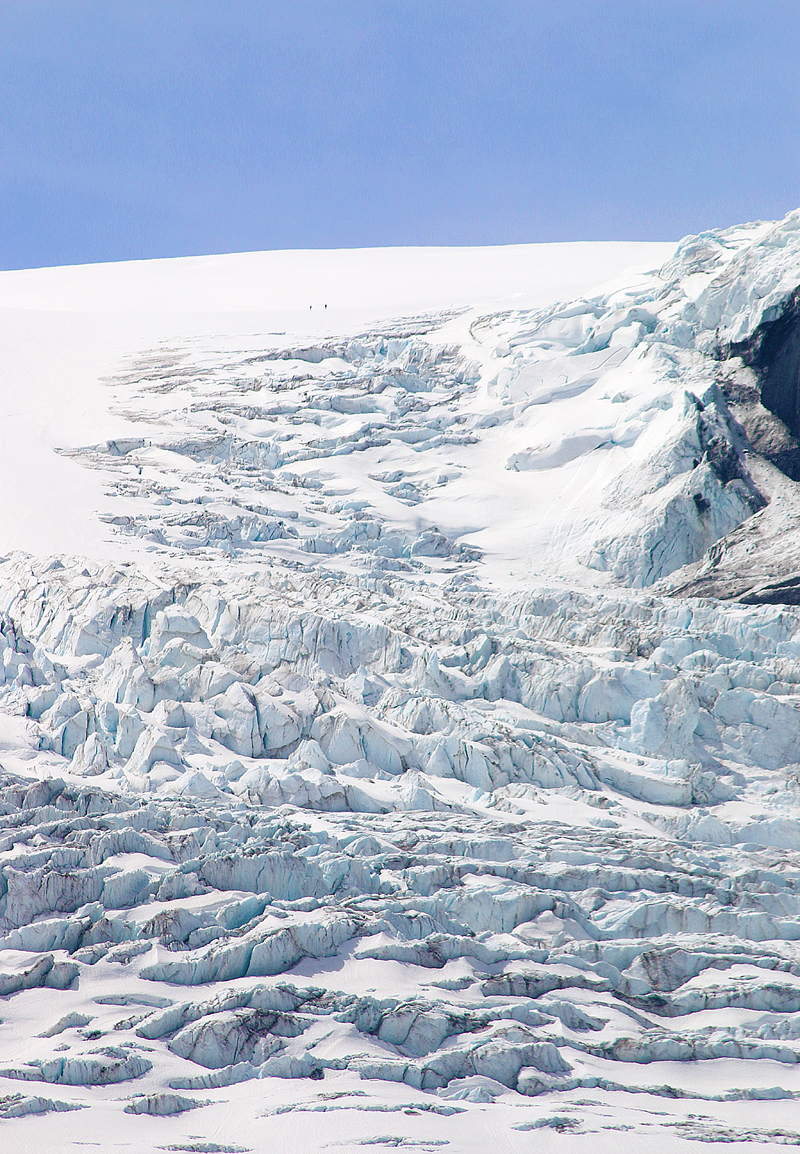
The idea of standing on the tongue of the glacier — which moves over thousands of years — simply amazed me.

The photograph shown above is an even closer view of Athabasca Glacier.
Drinking Glacier Water

There are channels of water flowing from the glacier — but here is a tip if you find yourself on the glacier…
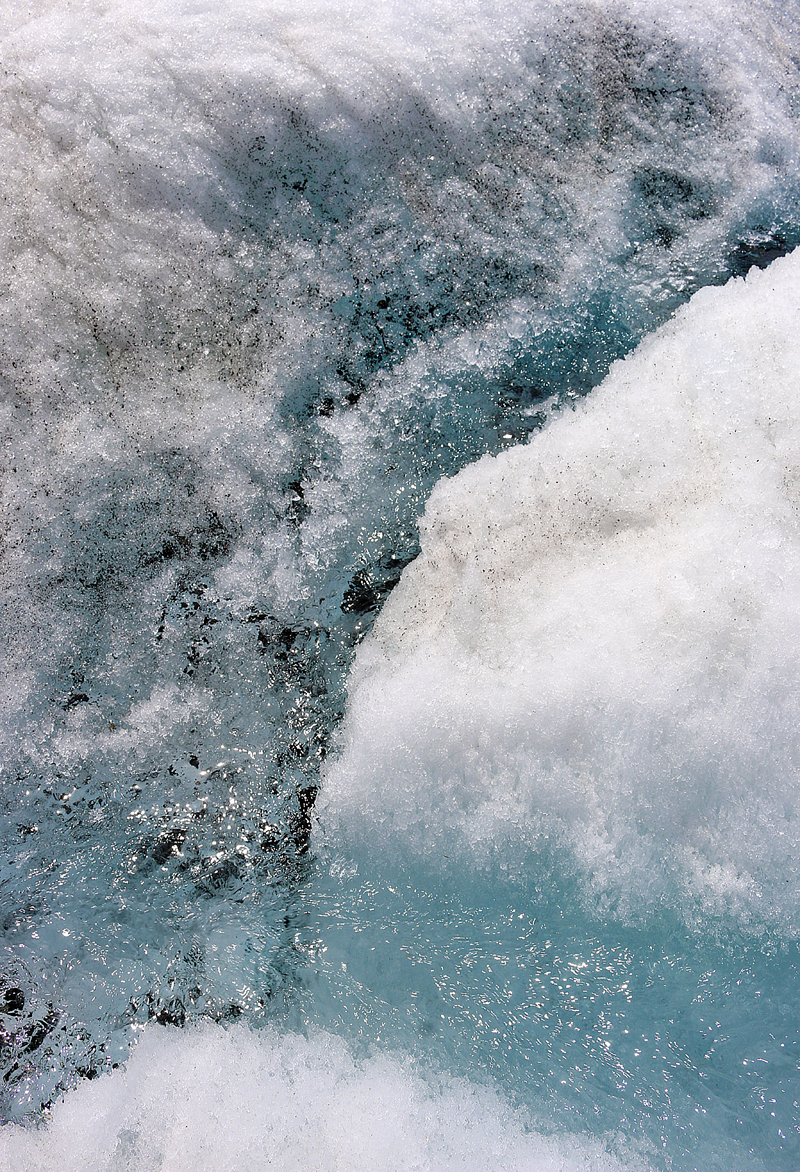
…the channel from right to left has most likely had other people dipping their bottles into it already…
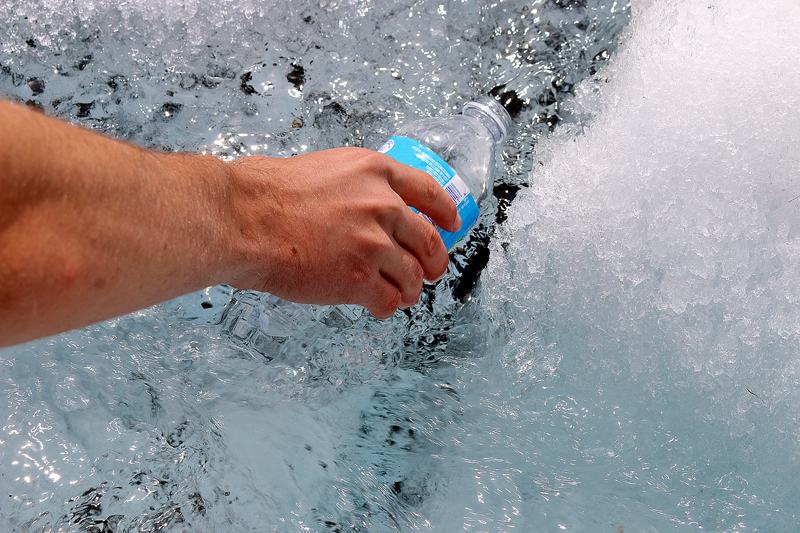
…so if you want to drink water which very likely has not been touched by humans over thousands of years, place your bottle in the channel coming directly from the glacier itself. Plenty of water is available; so you can bring as many empty bottles as you can carry.
The water was amazingly delicious; incredibly cold; and crisp and refreshing. I could not drink enough of it — and yes, I was rather thirsty when I approached the glacier. This water completely satisfied my thirst. I wished that I could build a pipe from here directly to where I am based.
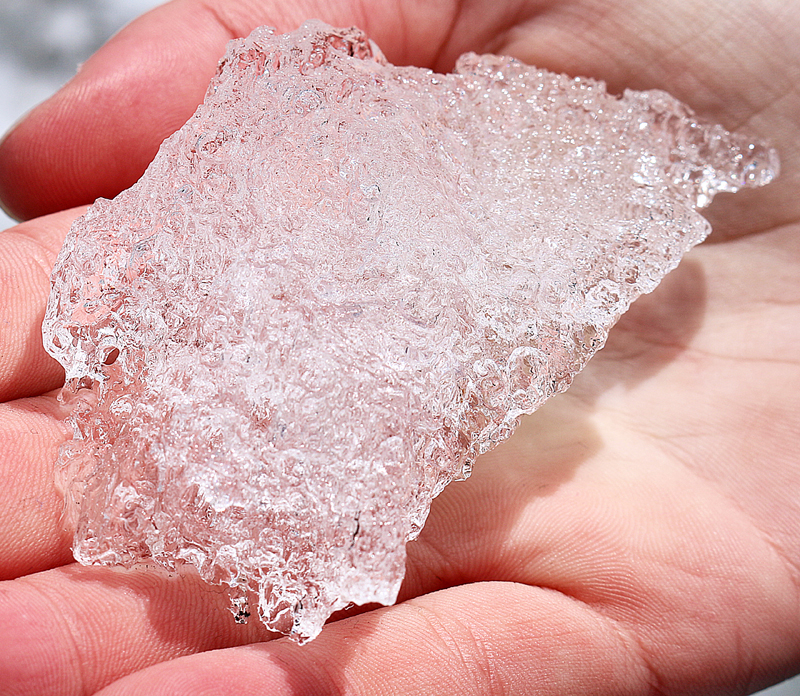
Pieces of the glacier ice abound if you want to pick one up.

An excellent view of just how steep is the moraine hill is viewed while on the ice.
Play Time For Me
I rarely effect effects to affect my photographs; but as I did with a photograph of the town of Banff in this article, I wanted to try something known as the Tilt-Shift effect — and the following photograph allowed me to experiment with this effect.
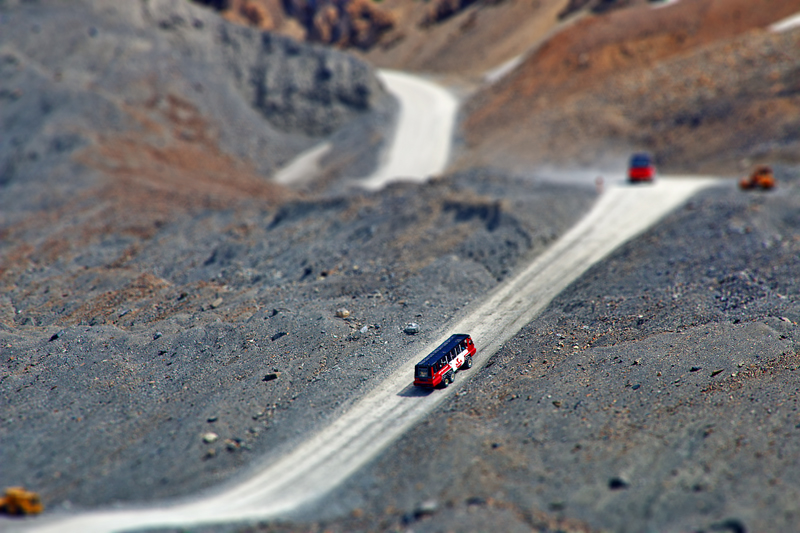
This is the same photograph of the hill — but with the tilt-shift effect affecting it, the all-terrain ice explorer vehicle now looks like a toy.

The Remaining Time on Athabasca Glacier

When put into perspective, how small and insignificant we all are when compared to the glaciers and mountains is truly remarkable.

Notice how in this series of photographs — which were taken in chronological order — one all-terrain ice explorer vehicle waits at the top of one hill while another all-terrain ice explorer vehicle climbs its steep grade.

On this table is a display of equipment which is used on the glacier ice. There were also portable displays which give some information pertaining to the glacier itself.

Signs delineate the border of the area which visitors are allowed to access while on the glacier, as venturing past them is extremely dangerous due to deep millwells — which are a network of tunnels in the glacier formed from large holes as a result of water from melting ice — and crevasses. The red chair on the right is part of the Red Chair program, of which you can read more details in this article.
Meanwhile, Snow Dome — which is the mountain that you see in the photograph above — is rather unique in that its peak is only one of two apexes in North America that is considered a triple continental divide of sorts, as water flows to either the Atlantic Ocean, Pacific Ocean or Arctic Ocean.

I even enjoyed just looking at the ice on which I was standing…

…but the time has come to leave the glacier.

We boarded the all-terrain ice explorer vehicle — and yes, it is the correct vehicle, as indicated by the blue sheet of paper with the silhouette of the cheetah on it.

Other glaciers were in view as well — such as Andromeda Glacier.

We passed other all-terrain ice explorer vehicles on the way out.

Summary
The meeting spot for the tour of Andromeda Glacier — as well as where to purchase tickets in person — is located at the Columbia Icefield Discovery Centre on Icefields Parkway.
| May 27 to September 3 | 9:00 in the morning to 6:00 in the evening |
| September 4 to October 1 | 10:00 in the morning to 5:00 in the afternoon |
| October 2 to October 15 | 10:00 in the morning to 4:00 in the afternoon |
Tours depart every 15 to 30 minutes — weather permitting.
The prices for the Glacier Adventure — which are in Canadian dollars — include access to the Glacier Skywalk on the edge of a cliff with a glass floor, which I intend to cover in a future article. The Glacier Skywalk can be done separately without being on the glacier for a lower cost; but the Glacier Adventure cannot be separated from the Glacier Skywalk.
| 2017 RATES | ADVANCED RATE | REGULAR RATE |
| Adults ages 16 and older | $85.00 | $94.00 |
| Child ages 6 through 15 | $43.00 | $47.00 |
| Infant 5 years of age and younger | Free | Free |
The $85.00 translated to $51.42 in United States dollars. It was not a bad deal at all. I certainly recommend the experience.
All photographs ©2017 by Brian Cohen.

